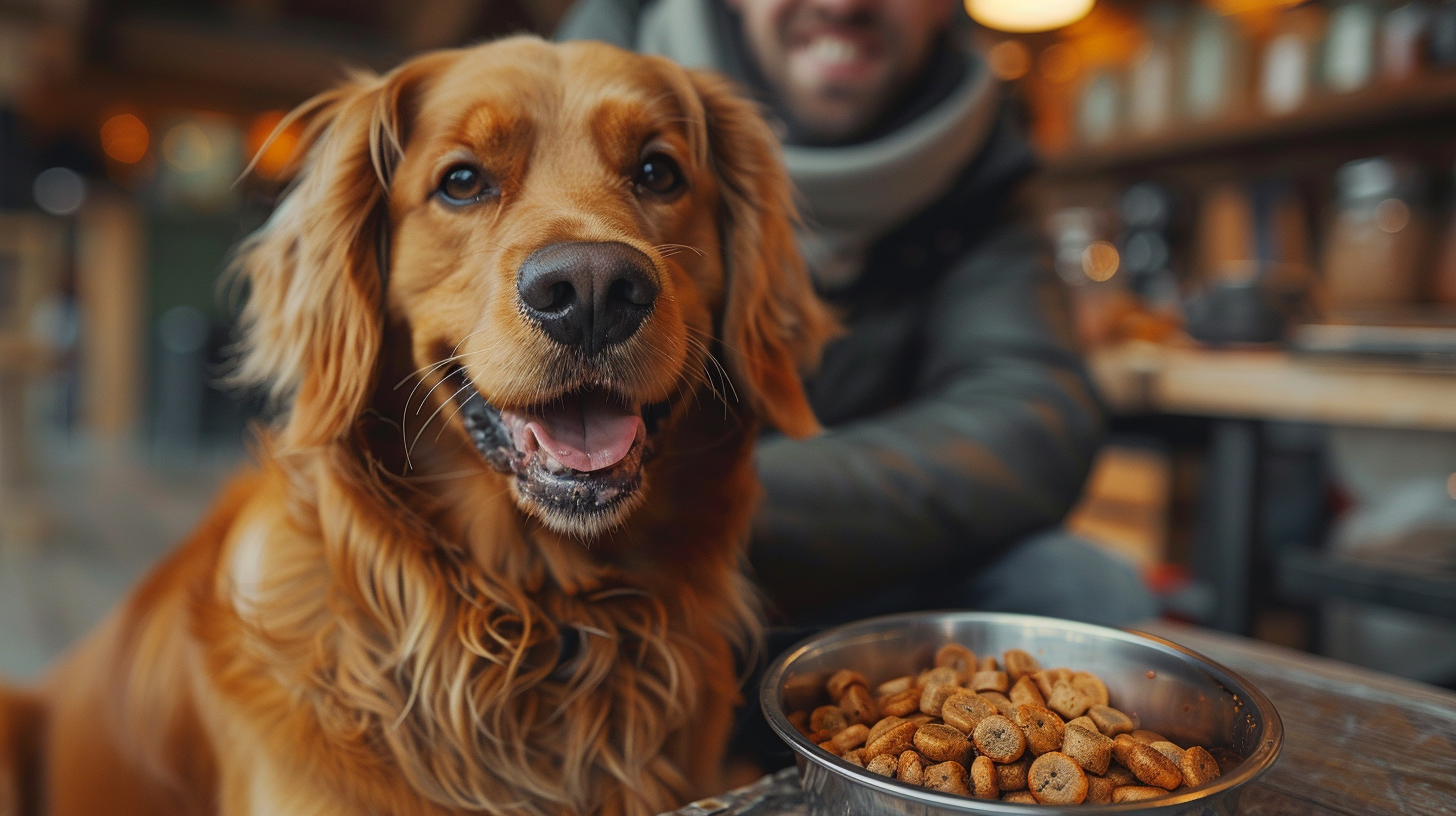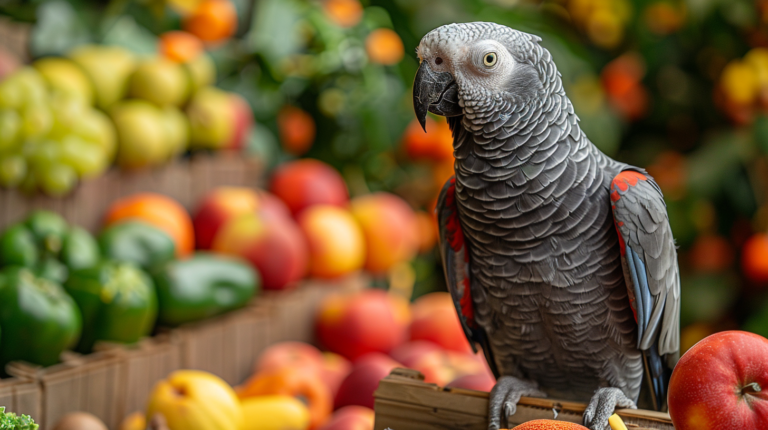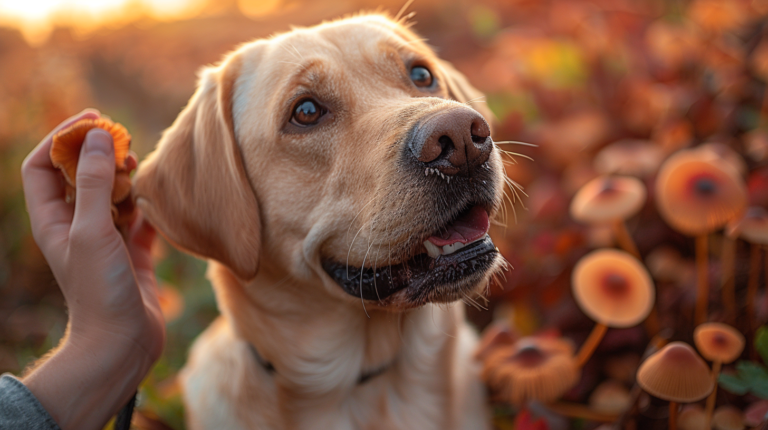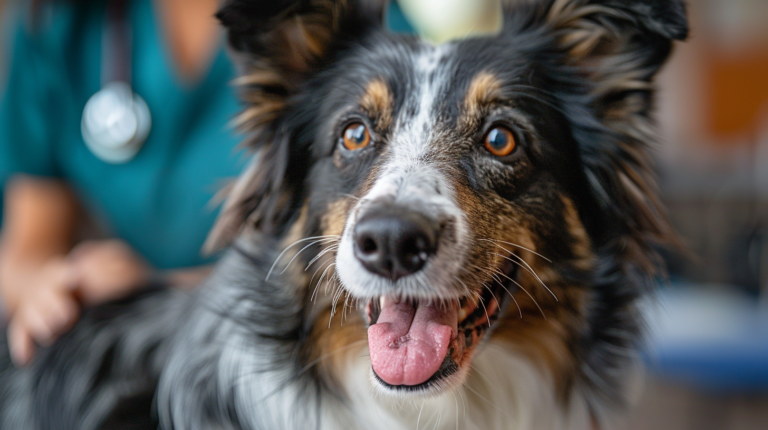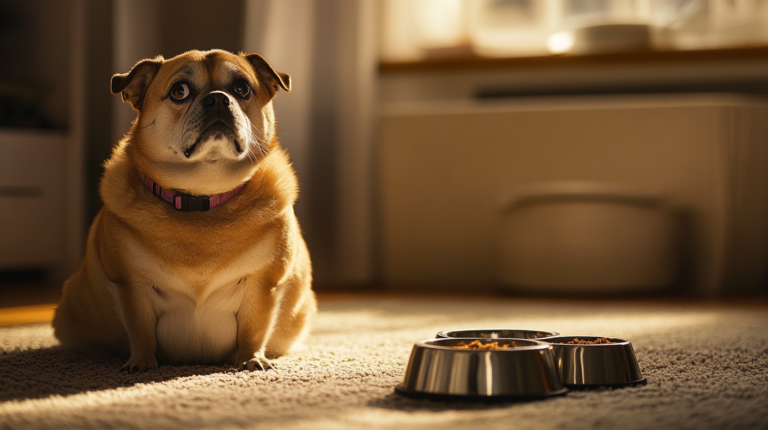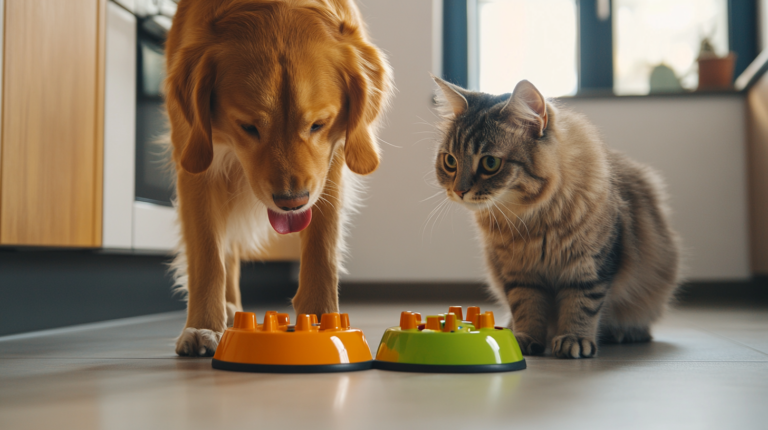Master daily pet feeding with our 6 essential rules covering proper portions, feeding schedules, nutrition, and hydration to keep your dog or cat healthy and happy for years to come.
Table of Contents
Why Daily Pet Feeding Matters
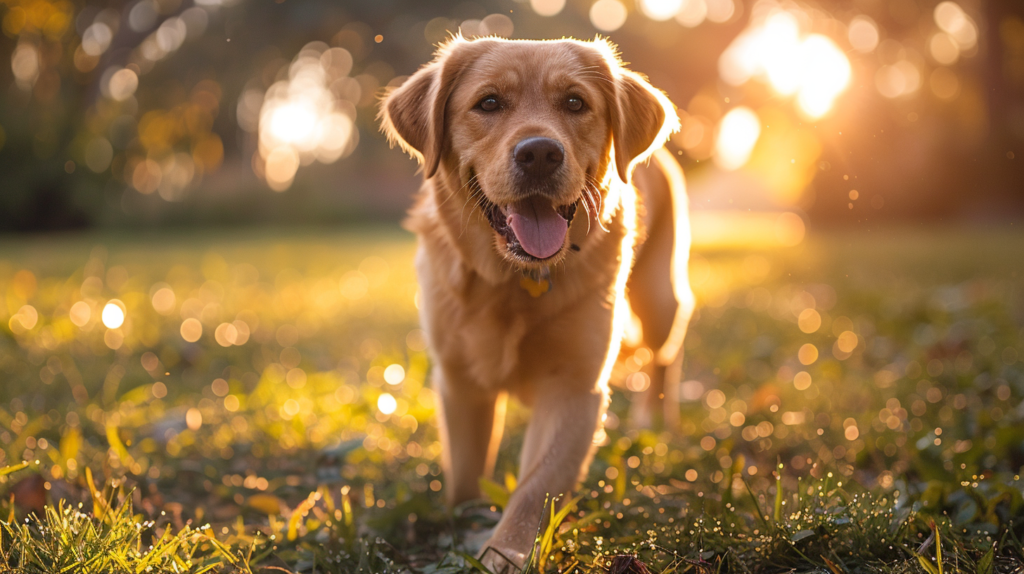
Every pet parent wants what’s best for their furry family members. From cuddles to playtime, we prioritize their happiness and well-being. However, one aspect of pet care that significantly impacts their health, behavior, and longevity is often overlooked or misunderstood: daily pet feeding routines.
Proper daily pet feeding goes far beyond simply filling a bowl with food. It involves understanding your pet’s unique nutritional needs, establishing consistent feeding times, selecting appropriate portions, and creating positive feeding environments. According to the American Veterinary Medical Association, approximately 59% of cats and 56% of dogs in the United States are classified as overweight or obese, often due to improper feeding practices.
Whether you’ve just welcomed a new pet into your home or you’re looking to optimize your longtime companion’s feeding routine, following established feeding guidelines can make a tremendous difference in their quality of life. In this comprehensive guide, we’ll explore six essential daily pet feeding rules that every responsible pet owner should follow, backed by veterinary expertise, scientific research, and real-world experience.
Let’s dive into these crucial daily pet feeding practices that will help your pet thrive for years to come.
Rule 1: Establish Consistent Feeding Times
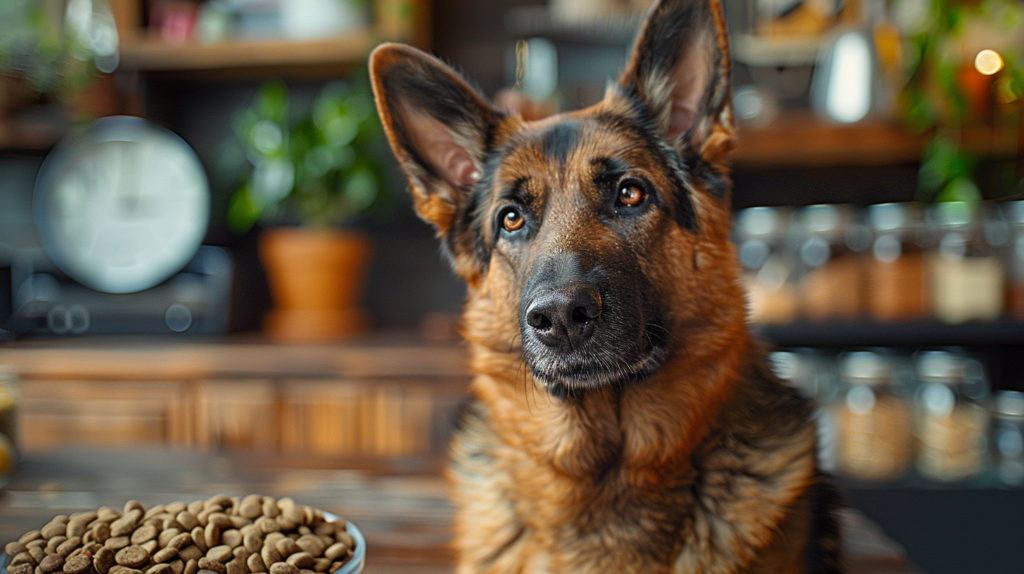
Consistency is the cornerstone of effective daily pet feeding. Animals thrive on routine, and a regular feeding schedule provides structure and security that benefits both their physical and psychological well-being.
Why Consistency Matters
Research published in the Journal of Veterinary Behavior indicates that pets with consistent feeding schedules show fewer behavioral problems and experience less anxiety than those fed at irregular intervals. Dr. Sarah Miller, a veterinary nutritionist at Cornell University College of Veterinary Medicine, explains:
A consistent feeding schedule helps regulate your pet’s digestive system and metabolism. When animals know when to expect food, their bodies naturally prepare for digestion by releasing appropriate enzymes and hormones at the right times. This maximizes nutrient absorption and supports overall digestive health.
| Pet Type | Age | Recommended Feeding Frequency |
| Dogs | Puppies (8-12 weeks) | 3-4 times daily |
| Dogs | Puppies (3-6 months) | 3 times daily |
| Dogs | Puppies (6-12 months) | 2 times daily |
| Dogs | Adult dogs | 1-2 times daily |
| Dogs | Senior dogs | 2 smaller meals daily |
| Cats | Kittens (0-6 months) | 3-4 times daily |
| Cats | Kittens (6-12 months) | 2-3 times daily |
| Cats | Adult cats | 2 times daily |
| Cats | Senior cats | 2-3 smaller meals daily |
How to Establish a Feeding Routine
- Set specific times: Choose feeding times that align with your daily schedule to ensure consistency.
- Use feeding cues: A verbal cue like “dinner time” or the sound of food being prepared can help signal mealtime.
- Stick to the schedule on weekends: Maintain the same feeding times even when your routine changes.
- Plan for schedule disruptions: If you know you’ll be away during a scheduled feeding time, consider automatic feeders or pet sitters to maintain consistency.
Creating a reliable daily pet feeding schedule takes commitment, but the benefits—including improved digestion, better weight management, and reduced anxiety—make it well worth the effort.
Rule 2: Measure Portions Accurately
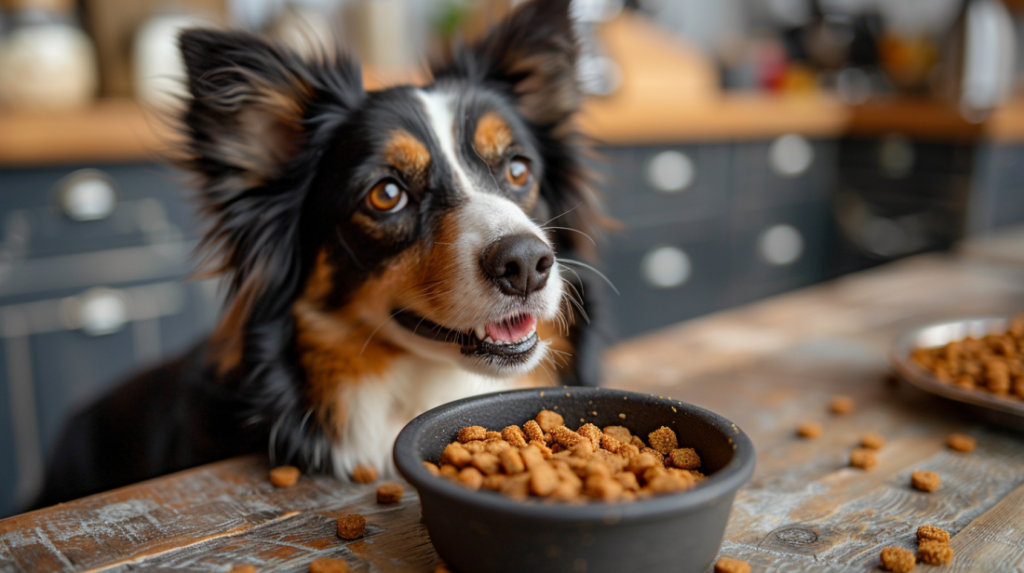
One of the most common mistakes in daily pet feeding is eyeballing portions rather than measuring them precisely. This seemingly small oversight can lead to significant health issues over time, particularly obesity and related conditions like diabetes, joint problems, and reduced lifespan.
The Dangers of Overfeeding
A 14-year landmark study by Purina demonstrated that dogs fed to maintain ideal body condition lived an average of 1.8 years longer than their slightly overweight counterparts. That’s an increase of approximately 15% in life expectancy—simply from proper portion control!
“Free feeding” (leaving food available all day) is particularly problematic for many pets. Dr. Lisa Weeth, board-certified veterinary nutritionist, notes:
“Most pets, especially dogs, lack the natural ability to self-regulate their food intake when high-calorie, palatable commercial diets are constantly available. Measured, scheduled meals help prevent weight gain and allow you to monitor food intake, which is crucial for early detection of health problems.”
Tools for Accurate Measurement
- Digital kitchen scale: The most accurate method, measuring food by weight rather than volume
- Measuring cups: Ensure you’re using actual measuring cups, not coffee mugs or other containers
- Portion control scoops: Some premium foods include specially calibrated scoops
- Smart feeders: Advanced options that dispense precise portions automatically
How to Determine the Right Portion Size
The appropriate amount of food depends on several factors:
- Manufacturer’s guidelines: Start with the feeding recommendations on your pet’s food packaging, but understand these are often just starting points.
- Weight and body condition: Your pet’s current weight and whether they need to gain, maintain, or lose weight.
- Activity level: Active pets require more calories than sedentary ones.
- Age: Growing puppies and kittens need more calories per pound than adults; seniors typically need fewer.
- Health status: Certain medical conditions may require dietary adjustments.
A 2018 study in the Journal of Animal Science found that over 65% of pet owners inaccurately measure their pets’ food portions, typically overestimating by 25% or more. This emphasizes how critical precise measurement is to your daily pet feeding routine.
Work with your veterinarian to calculate your pet’s specific caloric needs, and check your pet’s body condition regularly, adjusting portions as needed to maintain ideal weight.
Rule 3: Choose the Right Food for Your Pet’s Life Stage and Health Needs
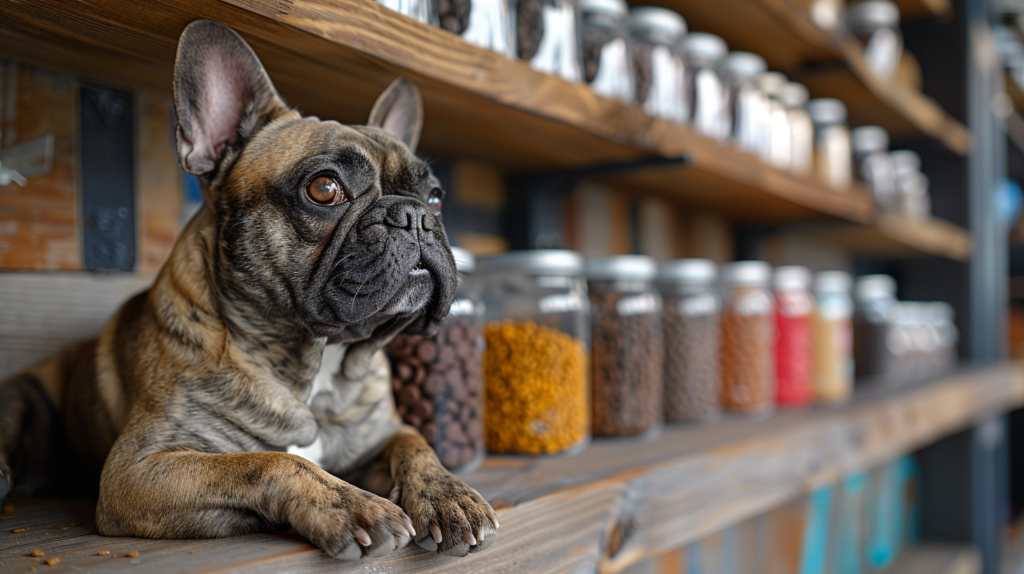
Not all pet foods are created equal, and what works wonderfully for one animal may be entirely inappropriate for another. Selecting the right food is a crucial component of daily pet feeding success.
Life Stage Nutrition
Pets have dramatically different nutritional requirements at various life stages:
- Puppies and kittens need more protein, calories, and specific nutrients like DHA for brain development
- Adult pets require balanced nutrition for maintenance
- Senior pets often benefit from lower calories, higher fiber, and joint-supporting supplements
- Pregnant or nursing animals need increased calories and nutrients to support offspring
According to the Association of American Feed Control Officials (AAFCO), pet foods labeled as “complete and balanced” must meet minimum nutritional requirements for specific life stages. Look for labels that specify which life stage the food is formulated for.
Special Health Considerations
Many pets have specific health needs that can be addressed through nutrition:
- Weight management formulas for overweight pets
- Limited ingredient diets for pets with food sensitivities
- Prescription diets for conditions like kidney disease, urinary issues, or diabetes
- Dental health formulas to reduce plaque and tartar
A 2021 study in the Veterinary Journal found that 73% of dogs with specific health conditions showed improvement when fed appropriately formulated therapeutic diets.
Quality Matters
Dr. Jennifer Coates, DVM and veterinary advisor for PetMD, recommends looking for these indicators of quality:
“When selecting pet food, look for brands that employ board-certified veterinary nutritionists, conduct feeding trials (not just formulation tests), and have stringent quality control measures. The first few ingredients should be named meat sources rather than meat by-products or generic ‘meat meal.'”
Transitioning Between Foods
When changing your pet’s diet, gradual transitions are essential to prevent digestive upset:
| Day | Old Food | New Food |
| 1-2 | 75% | 25% |
| 3-4 | 50% | 50% |
| 5-6 | 25% | 75% |
| 7+ | 0% | 100% |
Working with your veterinarian to select appropriate food is one of the most important daily pet feeding decisions you’ll make. Schedule annual nutrition consultations to reassess your pet’s needs as they age and their health status evolves.
Rule 4: Provide Fresh Water at All Times
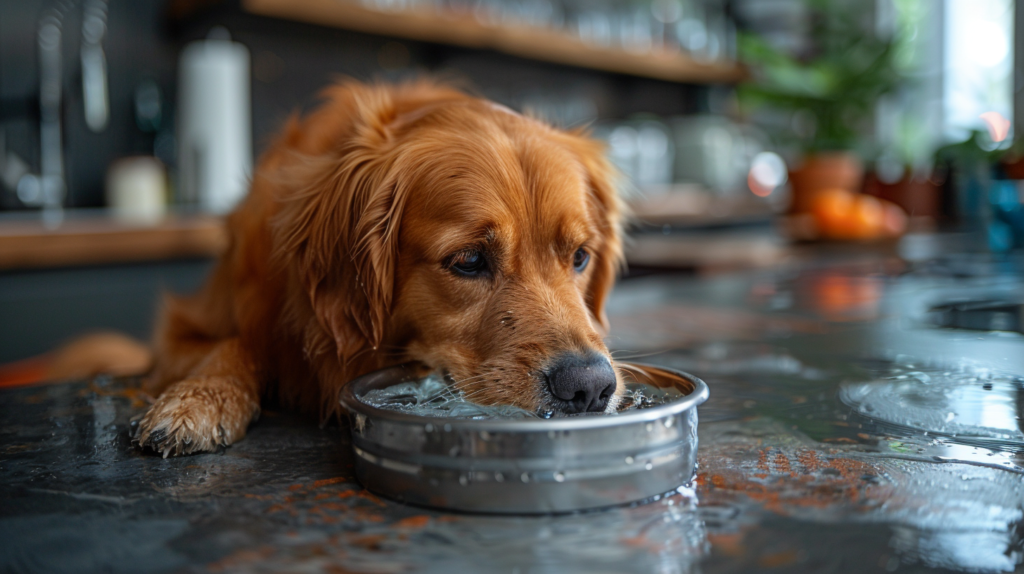
While much attention is given to food in daily pet feeding discussions, proper hydration is equally crucial yet often overlooked. Water is involved in virtually every physiological process in your pet’s body, from digestion to circulation to temperature regulation.
The Importance of Hydration
Dehydration can quickly become dangerous for pets. Even mild dehydration can cause:
- Lethargy
- Dry gums
- Loss of skin elasticity
- Reduced appetite
- Concentrated urine
Severe dehydration constitutes a medical emergency and can lead to organ failure if left untreated.
Water Requirements by Species
A study by the School of Veterinary Medicine at UC Davis found that:
- Dogs need approximately 1 ounce of water per pound of body weight daily
- Cats typically need between 5-10 ounces of water daily, depending on their size and diet
These requirements increase with exercise, hot weather, and when pets consume dry kibble rather than moisture-rich foods.
Creating a Hydration Strategy
For optimal daily pet feeding practices, consider these hydration strategies:
- Multiple water stations: Place water bowls in several locations around your home.
- Clean bowls regularly: Wash water bowls daily to prevent bacterial growth.
- Consider water fountains: Many pets, especially cats, prefer moving water and drink more from fountains.
- Add water to food: For pets on dry food diets, adding warm water can increase moisture intake.
- Ice cubes as treats: Some pets enjoy ice cubes as a hydrating treat.
- Monitor water consumption: Sudden changes in drinking habits can signal health problems.
Dr. Carly Fox, staff doctor at NYC’s Animal Medical Center, emphasizes:
Water intake is one of the most important yet underappreciated aspects of pet health. Many common conditions, from urinary crystals to kidney disease, can be prevented or better managed with proper hydration.
For pets with low thirst drives or those prone to urinary issues, consider incorporating wet food into their daily pet feeding routine. Canned foods typically contain 70-80% moisture, compared to just 10% in dry kibble.
Rule 5: Account for Treats in Daily Caloric Intake
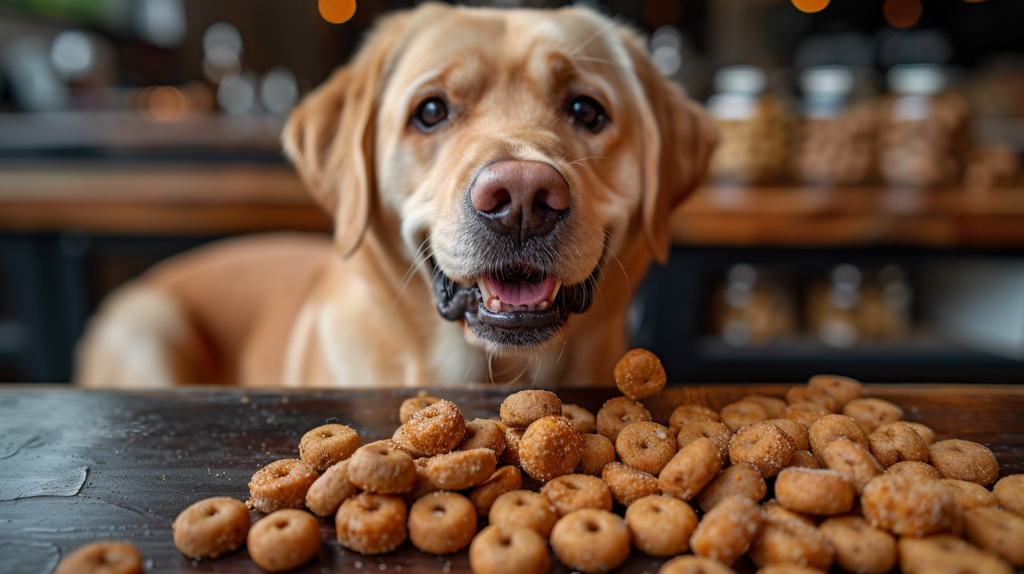
Treats are an important part of the human-animal bond and valuable for training, but they can quickly derail an otherwise perfect daily pet feeding plan if not managed properly. The “treat creep”—gradually increasing treats without accounting for them—is a major contributor to pet obesity.
The 10% Rule
The consensus among veterinary nutritionists is that treats should make up no more than 10% of your pet’s total daily caloric intake. Unfortunately, research from the Ontario Veterinary College shows that the average pet owner significantly underestimates the caloric impact of treats.
Consider these comparisons:
| Treat | Size | Calories | Human Equivalent |
| Medium dog biscuit | 1 treat | ~40 calories | 1 chocolate chip cookie |
| Dental chew | 1 treat | ~80 calories | 1 candy bar |
| Rawhide bone | 1 medium | ~100 calories | 2 scoops of ice cream |
| Pig ear | 1 ear | ~130 calories | 1 slice of pizza |
Healthy Treat Alternatives
Dr. Ernie Ward, founder of the Association for Pet Obesity Prevention, suggests these lower-calorie alternatives:
Fresh vegetables like green beans, carrots, and cucumber slices make excellent treats for dogs, while small pieces of cooked chicken or commercial freeze-dried meat treats can be satisfying for both dogs and cats—all with a fraction of the calories of commercial biscuits.
Treat-Tracking Strategies
For effective daily pet feeding management:
- Pre-portion daily treats: Set aside your pet’s daily treat allowance each morning to avoid overfeeding.
- Break treats into smaller pieces: Your pet enjoys the experience of receiving treats, not necessarily their size.
- Use a treat log: Keep track of treats given by all family members to prevent duplicate treating.
- Adjust meal portions: On days with more treats, slightly reduce regular meal portions.
- Use meals as rewards: Set aside small portions of your pet’s regular food to use as treats.
A 2020 study from Tufts University Cummings School of Veterinary Medicine found that using a portion of a pet’s daily kibble allowance as training rewards was just as effective for positive reinforcement as commercial treats—and helped maintain appropriate caloric intake.
Remember that daily pet feeding includes everything your pet consumes, not just what goes in their food bowl. Accounting for treats is essential for maintaining healthy weight and overall wellness.
Rule 6: Monitor Body Condition and Adjust Accordingly
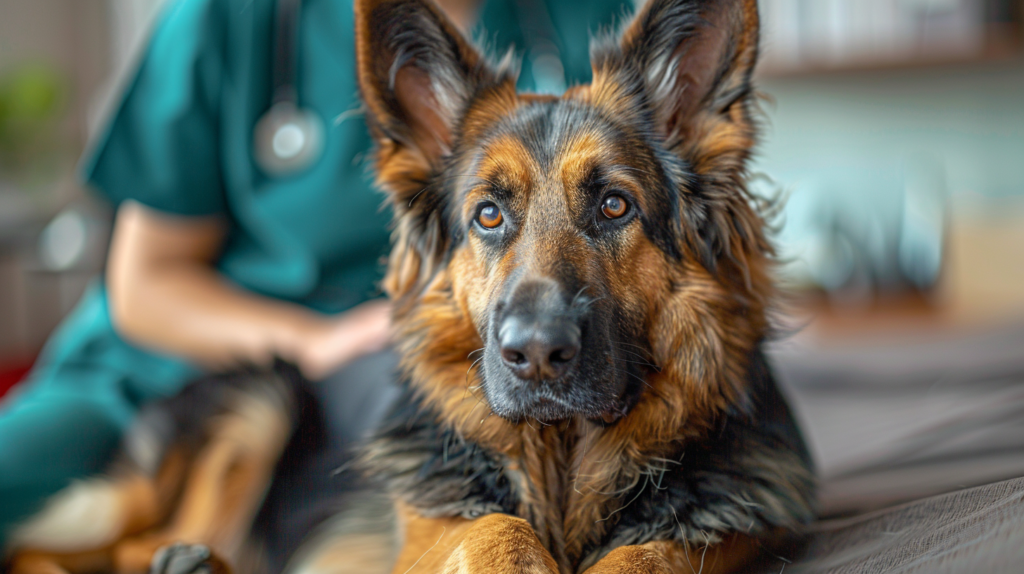
Even the most carefully calculated daily pet feeding plan requires ongoing assessment and adjustment. Your pet’s needs will change throughout their life based on factors including age, activity level, health status, and even seasonal variations.
Understanding Body Condition Scoring
Veterinarians use Body Condition Score (BCS) systems to evaluate pets:
- A 9-point scale is most common (1=emaciated, 9=severely obese)
- The ideal score is 4-5 out of 9
- You should be able to feel your pet’s ribs without pressing hard
- Your pet should have a visible waist when viewed from above
- Their abdomen should tuck up when viewed from the side
A recent study from the Royal Veterinary College found that only 17% of pet owners could accurately assess their pet’s body condition without training, highlighting the importance of learning this skill.
Signs It’s Time to Adjust Feeding
Watch for these indicators that your daily pet feeding plan needs modification:
- Weight changes: Gaining or losing more than 5% of body weight
- Changing activity levels: New exercise routines or seasonal activity changes
- Life stage transitions: Growing puppies/kittens, entering senior years
- Health diagnoses: Conditions like diabetes, kidney disease, or arthritis
- Medication changes: Some medications affect metabolism or appetite
Creating a Monitoring System
Dr. Julie Churchill, veterinary nutritionist at the University of Minnesota, recommends:
Weigh your pet monthly and document it, just as you would track a child’s growth. Take photos from the side and top view quarterly. These objective measures can help you catch gradual changes that might be missed day-to-day.
When to Consult Your Veterinarian
Seek professional guidance for daily pet feeding adjustments when:
- Your pet gains or loses weight unexpectedly
- You notice changes in appetite, water consumption, or energy
- You’re transitioning between life stages
- Your pet has been diagnosed with a new medical condition
- You’re considering changing food types (e.g., from commercial to homemade)
A collaborative study between Tufts University and Hill’s Pet Nutrition found that pets whose owners received professional nutritional counseling and followed regular weight monitoring protocols were 48% more likely to maintain ideal body condition long-term compared to those without such support.
Remember that daily pet feeding is not a “set it and forget it” process. Regular monitoring and willingness to make evidence-based adjustments are key to your pet’s lifelong health.
Rule 7: Create Positive Feeding Environments and Experiences
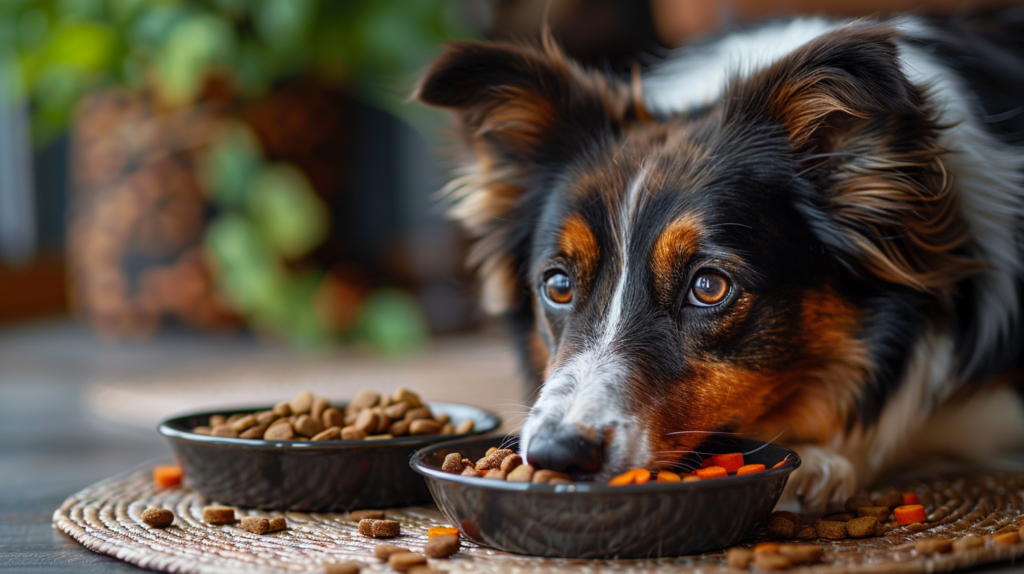
Beyond the what and when of daily pet feeding, the how matters tremendously. The feeding environment and experience can significantly impact your pet’s relationship with food, their stress levels, and even their digestive efficiency.
The Importance of Feeding Location
Research in veterinary behavioral medicine shows that where pets eat affects their comfort and food intake. Consider these environmental factors:
- Quiet, low-traffic areas: Many pets feel vulnerable while eating and prefer peaceful locations
- Separate feeding stations: In multi-pet households, separate feeding locations reduce competition and stress
- Consistent location: Changing feeding locations can create anxiety for some pets
- Non-slip surfaces: Stable surfaces help pets feel secure while eating
Reducing Stress During Meals
A 2019 study in the Journal of Feline Medicine and Surgery found that cats experiencing stress during mealtimes were more likely to develop food aversions and abnormal eating behaviors like gorging or food guarding.
Dr. Debra Horwitz, board-certified veterinary behaviorist, suggests:
Watch your pet’s body language while eating. Relaxed posture, normal eating speed, and willingness to leave and return to the food bowl indicate comfort. Hunched posture, rapid ingestion, or constantly looking up from the bowl suggest anxiety during feeding.
Specialized Feeding Solutions
Some pets benefit from specialized feeding approaches:
- Puzzle feeders and slow bowls: For pets who eat too quickly
- Elevated bowls: May help certain dogs with megaesophagus or arthritis
- Microchip feeders: Allow specific pets access to particular foods in multi-pet homes
- Food toys: Provide mental stimulation while delivering meals
Addressing Mealtime Behavior Issues
Common feeding behavior problems include:
- Food guarding: Protecting food resources through growling, snapping, or aggressive posturing
- Picky eating: Refusing certain foods or holding out for treats
- Competition: Racing to finish food before housemates
- Begging: Soliciting human food during family mealtimes
Each of these behaviors requires specific management strategies and sometimes professional intervention. The American College of Veterinary Behaviorists reports that approximately 20% of dog owners experience food guarding issues, making it one of the most common behavioral concerns related to daily pet feeding.
Creating positive associations with mealtimes from an early age can prevent many of these issues. When introducing new pets to your home, establish calm, consistent feeding routines immediately to set expectations and reduce anxiety around food.
How to Implement These Daily Pet Feeding Rules:
A Practical Approach
Knowing the rules of proper daily pet feeding is one thing; consistently implementing them is another. Here’s a practical framework to help you put these principles into action.
Step 1: Baseline Assessment
Before making changes to your pet’s feeding routine:
- Record current weight and take body condition photos
- Document current feeding practices (food type, amount, frequency)
- Note any existing health conditions or concerns
- Observe current eating behaviors and preferences
Step 2: Design Your Personalized Feeding Plan
Based on the rules we’ve discussed:
- Calculate appropriate portions with veterinary guidance
- Select appropriate food for your pet’s life stage and health
- Establish specific feeding times that work with your schedule
- Create a hydration strategy
- Determine treat allowances and alternatives
- Set up ideal feeding locations and equipment
Step 3: Transitioning to Your New Routine
- Implement changes gradually over 1-2 weeks
- Keep a daily log during the transition period
- Be consistent with new routines
- Watch for signs of stress or digestive upset
Step 4: Ongoing Monitoring System
Create a simple system for long-term success:
- Monthly weigh-ins
- Quarterly body condition assessments with photos
- Food intake tracking if weight becomes an issue
- Regular veterinary check-ups with nutritional discussions
Step 5: Troubleshooting Common Challenges
Be prepared for these common daily pet feeding hurdles:
- Schedule disruptions: Develop a plan for travel, holidays, or schedule changes
- Medication timing: Coordinate medications that need to be given with/without food
- Multiple caregivers: Ensure everyone follows the same feeding protocols
- Seasonal adjustments: Plan for activity level changes in different seasons
A case study published by the World Small Animal Veterinary Association highlighted a family with three dogs who implemented a structured daily pet feeding program using these steps. Within six months, all three dogs had achieved ideal body condition, two resolved minor digestive issues, and the family reported significantly less mealtime stress and begging behavior.
For more expert pet care tips and product recommendations, visit BlithePet.com — your trusted source for pet wellness.
FAQ
Q: How do I know if my pet is at a healthy weight?
A: The most reliable method is to use the Body Condition Score (BCS) system. You should be able to feel your pet’s ribs without pressing hard, see a defined waistline when looking from above, and notice an abdominal tuck when viewing from the side. Your veterinarian can demonstrate proper scoring techniques during regular check-ups. Weight alone isn’t a reliable indicator without considering your pet’s frame size and build.
Q: Is free feeding (leaving food out all day) ever appropriate?
A: Free feeding can work for some cats who are naturally good self-regulators, particularly those eating wet food which spoils quickly (encouraging them to eat appropriate amounts when fresh). However, it’s rarely ideal for dogs or for pets with weight management issues. Scheduled meals allow for better monitoring of intake, faster detection of appetite changes that might indicate health problems, and help maintain proper weight.
Q: My pet eats too quickly and then vomits. What should I do?
A: Rapid eating is common and can lead to digestive issues including regurgitation, vomiting, and even potentially dangerous bloat in larger breeds. Solutions include special slow-feeder bowls with obstacles that force your pet to eat around them, puzzle feeders that dispense food gradually, placing a large ball in the food bowl to work around, or dividing meals into smaller, more frequent portions throughout the day.
Q: Should I feed my pet before or after exercise?
A: For dogs, wait at least one hour after feeding before vigorous exercise, and at least 30 minutes after exercise before feeding to reduce the risk of bloat (gastric dilatation-volvulus), particularly in deep-chested breeds. Morning exercise followed by breakfast often works well for many pet households. Cats typically self-regulate their exercise, but interactive play sessions are best scheduled between meals rather than immediately after eating.
Q: How do I transition my pet to a new food without causing digestive upset?
A: Abrupt diet changes often cause diarrhea, vomiting, or reduced appetite. The ideal transition takes 7-10 days: start with 75% old food and 25% new food for 2-3 days, then 50/50 for 2-3 days, then 25% old food and 75% new food for 2-3 days before switching completely to the new food. If you notice soft stool during the transition, slow down the process. For pets with sensitive stomachs, adding a probiotic supplement during the transition may help (with veterinary approval).
Q: My pet suddenly refuses to eat their regular food. What should I do?
A: A sudden change in appetite warrants attention. First, rule out medical causes with a veterinary visit, especially if other symptoms are present or if appetite doesn’t return within 24 hours. Once medical issues are ruled out, consider behavioral causes like stress from household changes, food becoming stale, or issues with the feeding environment. Avoid adding “toppers” or frequently changing foods to entice picky eaters, as this can create learned behaviors that encourage finicky eating.
Conclusion
Proper daily pet feeding is both a science and an art. It requires understanding nutritional principles, recognizing your individual pet’s needs, and creating consistent routines that support their overall wellbeing.
By following these six essential rules:
- Establishing consistent feeding times
- Measuring portions accurately
- Choosing the right food for your pet’s life stage and health needs
- Providing fresh water at all times
- Accounting for treats in daily caloric intake
- Monitoring body condition and adjusting accordingly
- Creating positive feeding environments and experiences
…you’re setting your pet up for a lifetime of better health, reduced risk of preventable diseases, and improved quality of life.
Remember that daily pet feeding practices should evolve as your pet ages, as their activity levels change, and as new research emerges in veterinary nutrition. Stay informed, work closely with your veterinarian, and be willing to adjust your approach when needed.
The time and attention you invest in optimizing your pet’s nutrition today will pay dividends in more healthy, active years together—and that’s something every pet parent can appreciate.
Have a similar experience with your pet? Share it in the comments below!

